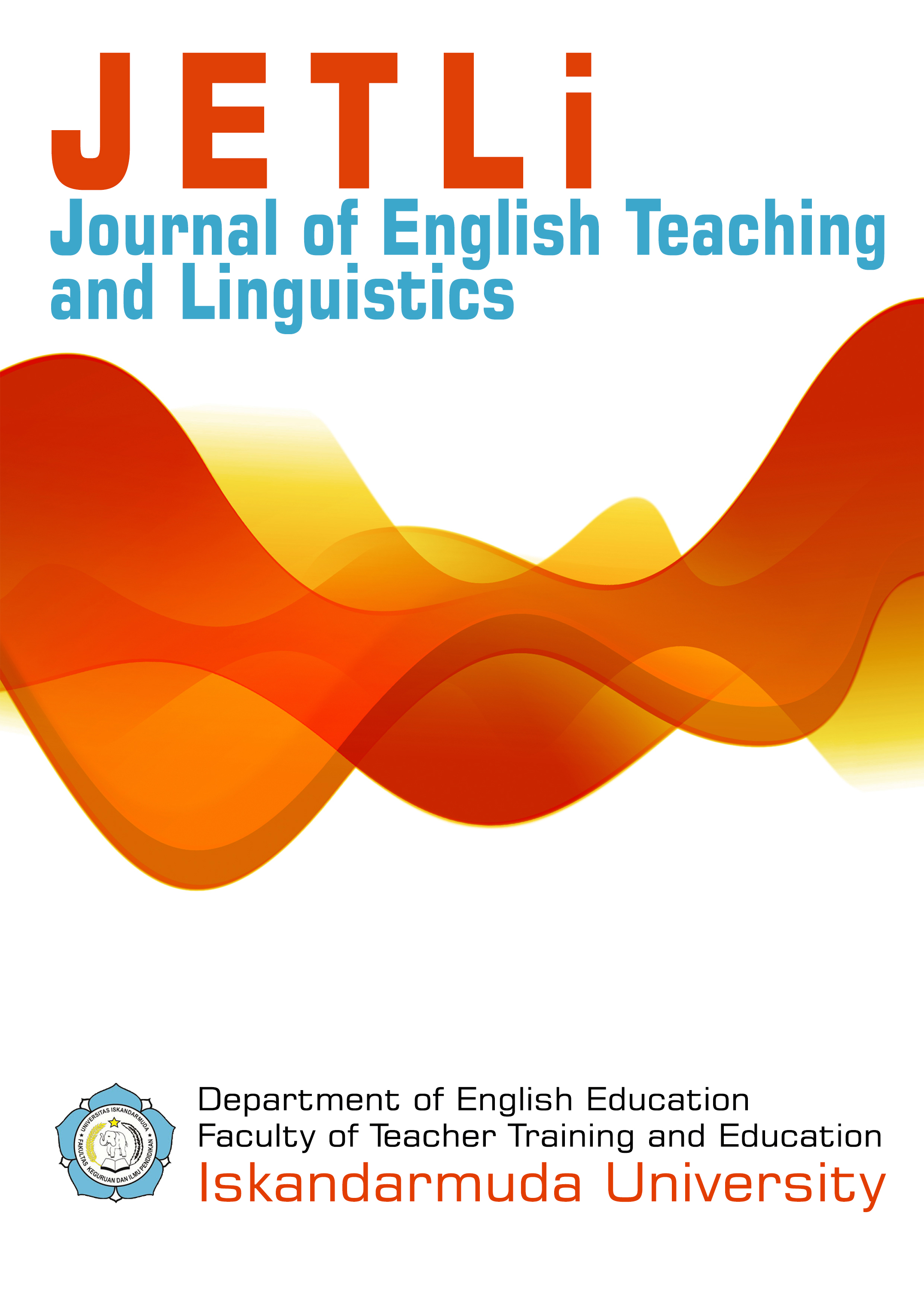THE ANALYSIS OF STUDENTS’ DIFFICULTIES AND STRATEGIES USED IN ENGLISH TRANSLATION PROCESS
DOI:
https://doi.org/10.55616/jetli.v1i1.6Keywords:
Analysis, students’ difficulties, strategies, English translationAbstract
This research is entitled “The Analysis of Students? Difficulties and Strategies Used in English Translation Process”. It can be seen that this is the qualitative research and the aims of this research are to know the methods used, the difficulties faced, and the strategies used by students in translation process. The researcher used two instruments, namely test and interview. The population of this research was the fourth semester students who had taken translation I in the third semester in English Language Education of Ar-Raniry State Islamic University. The sample was unit 1 consisting of 15 students. They were selected by using purposive sampling based on preliminary interview with translation lecturer. From the result of this research, it was found that there were 2 dominant methods that were used by participants in translation process, there are as follows: word-for-word translation and free translation method. In word-for-word translation, there were 9 participants (participant 1, 2, 4, 8, 9, 10, 11, 13, and 14) translated into the target language by single word in most common meaning and did preliminary translation (pre-translation) word for word. On the other hand, there were 6 participants (participant 3, 5, 6, 7, 12, 15) used free translation. They translated the text more clearly. The students faced many difficulties in religious culture in translation process. The difficulties they got from religious culture were vocabularies and terminologies. Moreover, participants were seldom found the religious vocabularies when they read and learned the common text. To overcome these difficulties in translation process, there were only 2 strategies mostly used by the participants in translation process. They were as follows: translation by a more general word and translation by paraphrase using related word. It was easy to understand the content of the text when they used both of translation strategies.
References
Akbari, A. (2013). Exploring into the new model procedure in translation: Wafting as a case in point. International Journal of Education & Literacy Studies, 1(2), 18-26. https://doi:10.7575/aiac.ijels.v.1n.2p.18.
Alshenqeeti, H. (2014). Interviewing as a data collection method: A critical review. English Linguistic Research, 3(1).
Baker, M. (1992). In other words: A course book on translation. London & New York: Routledge.
Hartas, D. (2010). Educational research and inquiry. London: Continuum International Publishing Group.
Mashhady, H., & Noura, M. (2012). A case study: Translation problems in the story of Rustam and Sohrab based on warner & warner translation. English Language Teaching, 5(9).
Molina, L., & Albir, A.H. (2002). Translation techniques revisited: A dynamic and functionalist approach. Meta, 47(4).
Mollaei, F., Taghinezhad, F., & Sadighi, F. (2017). Teachers and learners’ perceptions of applying translation as a method, strategy, or technique in an Iranian EFL setting. International Journal of Education & Literacy Studies, 5(2).
Nugraha, A., Nugroho, A. B., & Rahman, Y. (2017). English-Indonesia translation methods in the short stoey “A Blunder” by Anton Cheknov. Indonesian EFL Journal, 3(1).
Sharififar, M. (2010). Applicability of Newmark’s procedures to translation of religious cultural elements from English into Persian. Iraanian Journal of Applied Language Studies, 1(2).
Wu, J. (2008). The analysis of cultural gaps in translation and solutions. English Language Teaching, 1(2).
Yaqub, M, O. (2014). Text-types translation types and translation assessment: A case study of chapter 112 of the holy Quran in Rodwell, Al-Hilali and Khan’s translation. International Journal of Humanities and Social Science. 4(8).
Zainudin, I.S., & Awal, N.M. (2012). Translation techniques: Problem and solutions. Social and Behavioral Sciences, 59.
Published
How to Cite
Issue
Section

This work is licensed under a Creative Commons Attribution 4.0 International License.
Authors retain copyright and grant the journal right of first publication with the work simultaneously licensed under an Attribution 4.0 International (CC BY 4.0) that allows others to share — copy and redistribute the material in any medium or format and adapt — remix, transform, and build upon the material for any purpose, even commercially with an acknowledgment of the work's authorship and initial publication in this journal.







 Journal of English Teaching and Linguistics
Journal of English Teaching and Linguistics